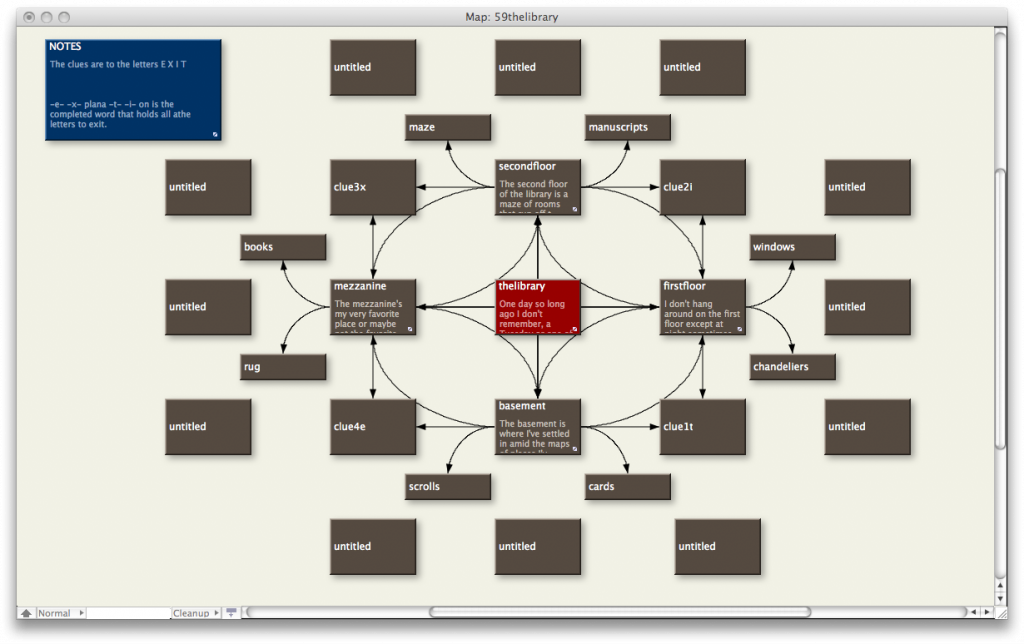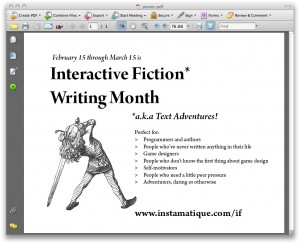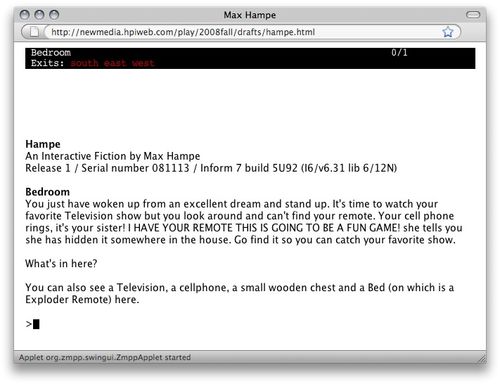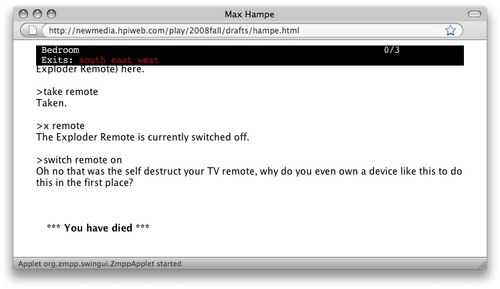INTERACTIVE FICTION: Colossal Cave Text Adventure
I’ve been thoroughly enjoying watching Peter Jerz, 11 year-old son of Professor Dennis Jerz (Seton Hill) play this text adventure game via three videocasts of his experience.
Dennis is teaching this course at his college and it is a rare treat to sit back and enjoy the gameplay of someone else going through the interaction of the game. We did this in one of my literature courses at Tunxis prior to the inclusion of a New Media course later established and I remember sitting at the helm of the keyboard in the computer lab while the other students gathered around giving suggestions and directions as to how to maneuver through the game. It was most helpful to have someone provide clues that I’d missed since we all had played the game, Photopia, individually at home and some of us got a lot further along in it than others. At one point, I remember trying all the standard directional functions of n (north), s, e, and w, and even up and down. I tried several other verbs but just couldn’t get out of a particular room without banging against the walls. After I typed in “cry” in frustration (hey, for a girl it sometimes works with a cop in a speedtrap) I was told to type “fly” and voila!
What Dennis has done here is made the reader/user’s first interactive experience a bit less intimidating by showing the thought process that develops in the game as one learns the lingo of text adventure. Besides the directions and most standard verbs acknowledged by the games, there are the shortcuts such as “x” for examine (a room, an item, etc.) and “i” to refresh one’s memory about what “inventory” has been taken, there are words such as “speak” or “talk” depending on the author’s choice in allowing the reader/user to interact with characters within the story.
This just may have me buckling back down to play with a few more games that I haven’t looked at in a few years and more, to maybe try my hand at creating a game myself. One that breaks down and helps you when you “cry.”








 The Lost Children: A Charity Anthology
The Lost Children: A Charity Anthology